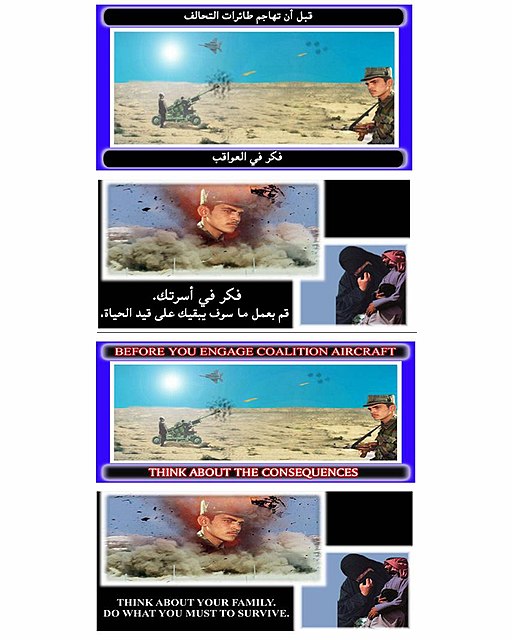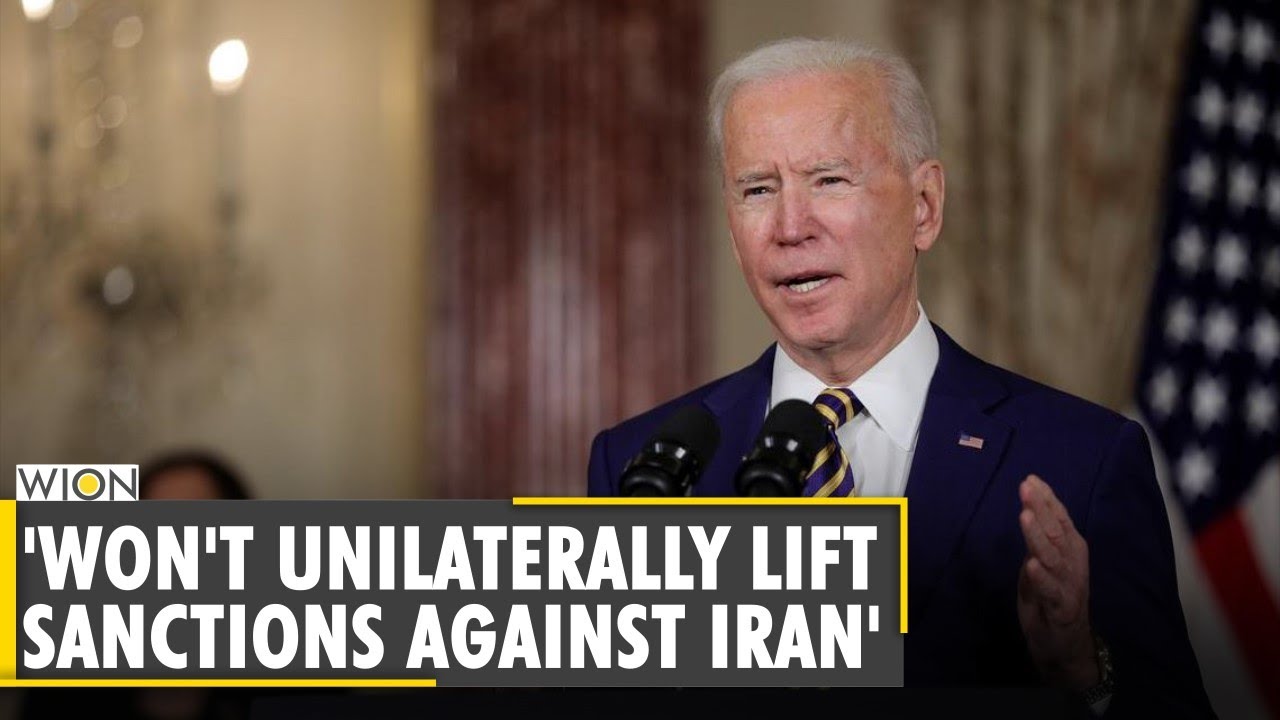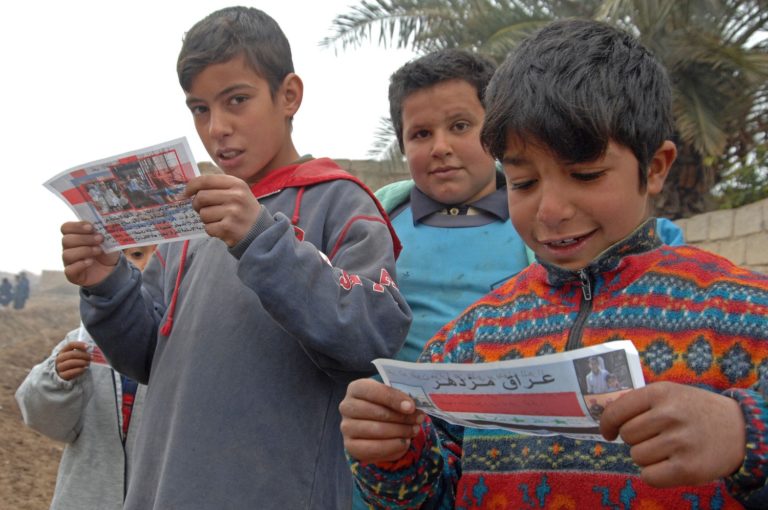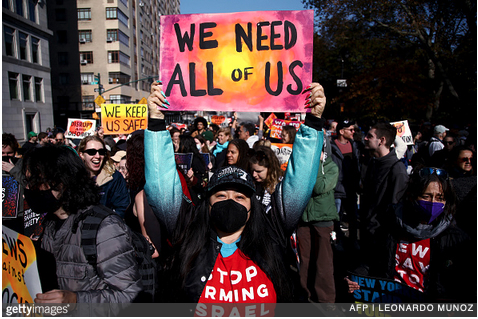The United States has a long history of using its military to extend, directly or through proxies, its power and commercial-industrial interests. But such a history is becoming increasingly a source of embarrassment, both to many U.S. citizens and to people and governments elsewhere. It is a public relations problem. It also runs the risk of increasingly active popular resistance, both here and there. To assuage this concern, the government-military-industrial-tech-academic complex has been trying to make war more respectable. This will allow us to become even more fond of war, or at least not feel guilt and outrage at it—and to wage war by other means everywhere all the time. It is a strategy for disarming the anti-war movements, and we must pay attention to it. Ultimately, it will ensure that we cannot tell the difference between war and peace. The victims elsewhere of this “new normal” will certainly know, but we will be encouraged to forget about them.

War by Proxy and Propaganda
In recent decades, we have seen the United States attempt to wage war on other countries using proxy armies. Some historic and blatant examples of this include the Kennedy Administration’s support for the Cuban Bay of Pigs invasion in 1962, and the Reagan Administration’s support for the Nicaraguan Contras in the 1980s. In these and other cases, the United States provided military training and advice, military equipment and arms. In the Cuban case, Kennedy wanted to keep the “invasion” from gaining too much press, since that might prove negative. In the Nicaraguan case, Reagan made a very public propaganda show of declaring our support for the Contras as a struggle for the freedom and democracy of Nicaragua and the security of the hemisphere. So the management of image, narrative, and media coverage became and has remained an important component of the attempt to make war respectable. It is the modern and more sophisticated form of the negative caricaturing of the enemy and the noble cause of “our side” that nations at war have long engaged. Proxy war and its attendant propaganda-media campaign allows the perpetrator of war to avoid actually waging war directly. We are merely supporting the struggles of others. This sort of clean proxy warfare is most used and effective when we are trying to overthrow a government that does not agree to do our bidding, as in Cuba, Venezuela, Nicaragua, Bolivia, and others. But proxy warfare has many limiting factors—legal, political, practical— that impair its effectiveness in gaining the desired objectives. The proxies are not always reliable. The propaganda-media campaign may not convince enough Americans of the value of our efforts. The media itself might decide to ask some hard questions.
The Trojan Horse: Front Organizations
Another form of proxy warfare is the use of front organizations to incite internal dissent, insurrection, or civil war against a government we want to topple. The organizations are sometimes directly funded by and coordinated with agencies of the U.S. government. Sometimes traditional non-governmental organizations are willing or unwitting partners in these attempts. There is, again, a history to this. In the 1960s, for example, the American Institute of Free Labor Development (AIFLD), an affiliate of the AFL-CIO and the CIA, actively fomented labor unrest in newly independent Guyana, based in part on racial identities between Black and East Indian Guyanese (together, more than 90 percent of the population). The violence that resulted was used to de-legitimize and force out the government of Cheddi Jagan. The U.S. military did not fire a shot or drop a bomb, but the use of AIFLD was effective in waging war against Jagan’s government. In the current decade, U.S. governments have been using front organizations to channel and exacerbate legitimate dissent in Nicaragua. The high-sounding National Endowment for Democracy, with direct funding and connections from U.S. government entities has been accused of actively fomenting internal unrest in Nicaragua against the Sandinista government of Daniel Ortega, whom the U.S. has been desperately trying to eliminate since the 1980s. There is a long trail of evidence for this.
Drones and War Games
In the past decade, criticism has focused on weaponized drones. Drone warfare is a technological means for removing “boots on the ground” and giving the appearance that there is no invading army. The rationale for drone warfare is often that it is more effective and “surgical” in its killing, avoiding messy collateral damage. But the history of drone use is filled with many incidents of mass civilian deaths, including children. Another proposed benefit of drone warfare is that it saves soldiers’ lives. War can be conducted from a computer screen far away from the enemy. War can be clean, surgical, objective, and removed from the face-to-face consequences of taking the lives of others. But the psychological and moral costs of this kind of “clean’ warfare take a toll on some of the military personnel charged with carrying it out. A few years ago, Southern Oregon University and Peace House hosted a young former U.S. soldier who was part of a drone warfare squad. Cian Westmoreland was haunted by his time waging deadly drone strikes against targets in the Middle East. He became a witness that drone warfare is not only as deadly as “conventional” war, but arguably even less moral inasmuch as it removes the killers from direct contact with the victims and from any real danger to themselves. In some ways, drone warfare is a technological spin off from air bomber warfare or armed missile attacks. All of these advanced technologies wage deadly war from a distance. The more recent innovation is the increased reliance on distant computer control. Some critics say we are blurring the difference between waging war that kills people and playing war games on a screen, making deadly war more like a game. In the English language, we have long had many references to the game of war, and comparisons of war to a sports competition. Now we have a multi-million dollar industry in computer war games. [For an extended discussion, see Medea Benjamin, Drone Warfare: Killing by Remote Control, Verso Books, 2013, https://www.versobooks.com/books/1414-drone-warfare].
Economic Development as Warfare Against the Poor
In the past few years, the United State Agency for International Development (USAID) and a private contractor have concocted what are called Rapid Expeditionary Development Teams (REDs). These are small teams trained for both cultural awareness and military action, and often composed, at least in part, of active or retired U.S. military. Their purpose is to accompany economic development projects in countries where such projects are the object of much local resistance. If local communities see “development” projects (mining, logging, plantation export agriculture, tourism) as destructive to their environment and way of life—as a theft of their land and resources by outsiders—they often organize protests or simply refuse to move off their land. Often, as in Honduras, the country’s own military may intervene to quickly and brutally put down local resistance to such development. Thus, many Hondurans feel that their military is an occupying army at war with them. RED teams are seen as a first alternative in reducing local resistance by showing awareness of local cultural customs and by providing protection for development project workers who are usually outsider. The presence of REDs may, in theory at least, lessen the need for more direct military intervention to eliminate local resistance. The creation of REDs is an admission that, in many areas of the world, so-called development projects represent a violent theft and dislocation for local communities at the hands of corporations and governments. Economic development in many places takes on the appearance of warfare as powerful interests impose their projects. But to the rest of the world, it can be advertised as economic development to benefit the people of a country, not as war against the poor to get their resources.
 Sanctions as Stealth Warfare
Sanctions as Stealth Warfare
Sanctions have become a major form of punishing a country, its government, or a set of individuals. The use of sanctions, however, may result in the deaths or suffering of many people within a targeted country. In this sense, they are warfare that can be potentially as deadly as military invasion. Sanctions may take the form of arms embargoes, foreign assistance reductions and cut-offs, export and import limitations, asset freezes, tariff increases, revocation of most favored nation (MFN) trade status, negative votes in international financial institutions, withdrawal of diplomatic relations, visa denials, cancellation of air links, and prohibitions on credit, financing, and investment, including cut-offs of funding from international institutions such as the International Monetary Fund (IMF) and the World Bank. Sanctions can be applied by an individual country (U.S. sanctions against Cuba) or by an international body, particularly the United Nations. Nations may request the UN to apply sanctions against other nations; such sanctions bind all UN members. A country can also warn other nations that they, too, will be subject to sanctions if they continue business as usual with a country that has been targeted. Some targets of UN sanctions have included North Korea and Russia (for its invasion of Ukraine). Sanctions can be general—against an entire country. United States sanctions against Cuba are an example. Or they can be targeted against individuals or groups in a country—so-called “smart” sanctions. The Nica Act and the Renacer Act are examples of targeted sanctions by the U.S. against high members of the Nicaraguan government, leading Sandinistas, their families, and many others.
Although “smart” targeted sanctions are always promoted as targeting only certain people, not the entire population of a country, the reality is always more complex and dubious. The Renacer Act, for example, would affect not only Nicaraguan government officials but also their families and members of the Sandinista Party, whose current membership numbers perhaps one-third of the Nicaraguan population. Thus, the actual effects of targeted sanctions, as in the Renacer Act, can affect a much wider population than those mentioned as targets. In addition, sanctions often weaken the ability of governments to provide needed public services, such as public health and education, or to carry out other needed functions for lack of resources. During the Covid-19 pandemic, U.S. sanctions made it more difficult for Nicaragua to obtain test kits and vaccines. As another example in a different region, Doctors Without Borders has issued several concerns about the effect of sanctions on the people of Yemen, especially the children (https://reliefweb.int/report/yemen/yemen-these-sanctions-have-make-clear-they-do-not-apply-humanitarian-aid).
The UN and the US characterize sanctions as an acceptable middle ground between diplomacy and war. But critics point out that sanctions kill people, prevent governments from obtaining needed foods, medicines, or other necessities, or interfere with the ability of agencies to provide needed services to a general population. Sanctions are now increasingly criticized as a form of warfare, often as deadly as military strikes against a country. In addition, sanctions can have other, unintended, consequences. By making life more difficult for the people of a targeted country, sanctions can promote emigration as people flee a difficult, increasingly unlivable situation. Sanctions can also cause economic damage to U.S. businesses that are prohibited from trading or investing in a targeted country. The victims of this are likely to be U.S. workers who may lose their jobs.
In short, sanctions tend to result in some of the same deadly damage and destruction as outright acts of war. But they have the advantage of being packaged as a mild, non-military response. This is a convenient myth. There is little doubt that the current sanctions against Nicaragua are intended to be forms of stealth warfare against a government that the United States has wanted to eliminate for nearly four decades. The “collateral damage” extends to a wide sector of the population. But perhaps this is the intent—to make the population suffer so much that they turn against their own government. This same strategy was used before against Nicaragua, when the U.S.-supported Contras were trained to make life so difficult that the people would turn against the revolutionary Sandinista government. The Contras waged a brutal, shooting war on the ground. Today’s sanctions against Nicaragua (and Venezuela, and others) are often warfare by another name. There is concern that such sanctions can be a weapon to “soften” a country such as Nicaragua in preparation for an actual military intervention. They can do much damage without the need for a campaign of aerial bombing that has been used in the past to “soften” an enemy. Never mind the extensive collateral damage.
Militarism as a Way of Life
It is important to realize that all of these attempts to make war respectable are developing within a context in which the United States itself is becoming increasingly militarized. This extends also to many other countries as well. Militarism is not simply a singular phenomenon. It is really an entire cultural system, a way of living and seeing the world. Cultural anthropologists have described it thus: “[Militarism] is shaped through ideology and rhetoric, effected through bodies and technologies, made visible and invisible through campaigns of imagery and knowledge production, and it colonizes aspects of social life including reproduction, self-image, and notions of community.” A moment of reflection on daily life in the United States will reveal how pervasive militarism, military action, warfare, and violence as a means to an end have pervaded U.S. culture, from our local police forces to our immigration and border policies, to our games and entertainments. The trend is toward militarism as a way of life, and warfare as an increasingly “normal” state of affairs—the new normal. Thus, we find ways to make war respectable. Younger generations around the world—including the United States—are growing up in a world where war is permanent and everywhere, and they have known nothing else. Soon,we may no longer be able to tell the difference between war and peace. “And so, we drift toward unparalleled disaster.” Unless, perhaps, we wage critical and unconditional peace. The search for ever more clever means to wage war while making it more respectable never asks the fundamental, forbidden question: Why war at all? We must keep raising that question. And we must keep opposing new Congressional attempts to legislate sanctions and increase the military budget. That is the baseline.
***


